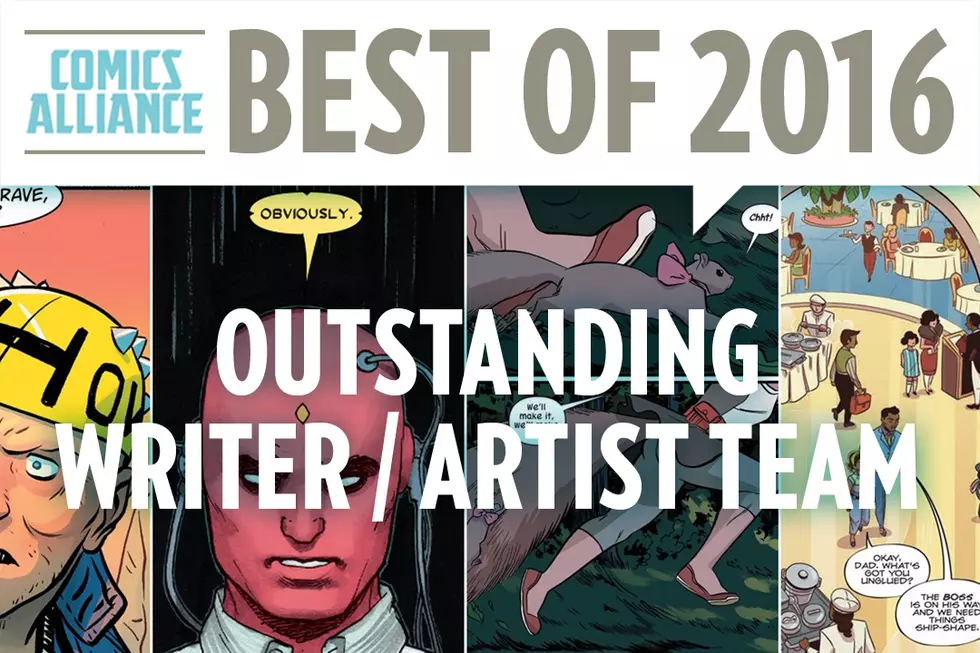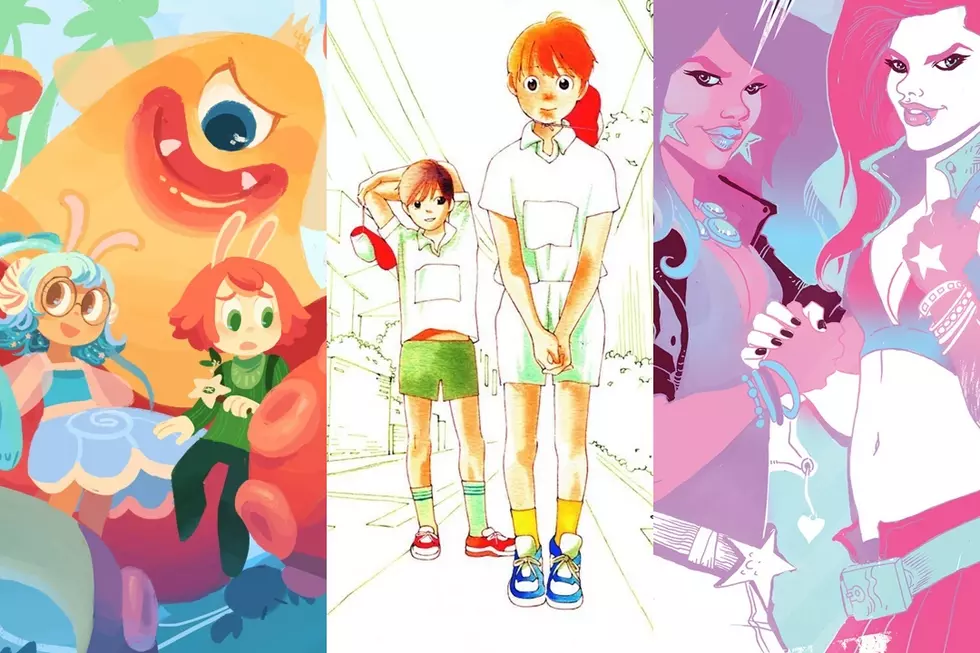
‘The Unbeatable Squirrel Girl: Squirrel Meets World’ Brings The Glory Of Doreen Green To Young Adult Fiction
We all love comics (at least those of here at ComicsAlliance), but as a medium/industry comic books can't hold a candle to Young Adult Literature, which has become a juggernaut in the two decades since Harry Potter came on the scene. Young adult books are beloved not just by the young readers they're aimed at, but by a great many adults. Marvel has been putting out young adult novels like Margaret Stohl's Black Widow books for a couple years now. But The Unbeatable Squirrel Girl: Squirrel Meets World is something special. It brings Doreen Green, aka Squirrel Girl, aka the breakout young-reader-friendly star of Marvel Comics of the past few years, to prose for the first time, under the shared pen of Shannon Hale and Dean Hale.
First of all, this book is gorgeous. It's a hardback with no dustcover, so the art is directly on the book. Designed by Maria Elias, with art by Bruno Mangyoku and lettering by Emma Trithart, it feels like a perfectly realized art object, with every surface inside and out reflecting the effervescent fun of Squirrel Girl's story. The front cover is an extreme closeup of Doreen's face in profile, while the back cover features a ready-for-battle Tippy-Toe perched on Doreen's tale.
The close cropping of the cover illustration also serves to downplay the difference between the Doreen of this book and the one in the comic. She’s the same character, but in the current Marvel Universe she’s a college student in the neighborhood of her early 20s, while this book depicts her as a 14-year-old ninth Grader. This is an origin story, of a sort Squirrel Girl has never really had before. She was born with her powers and tail, of course, but this novel tells the story of the exact moment she decides to embrace what makes her special and become a superhero, and where that leads.
Continuity isn’t a real concern here, but it’s entirely believable that this same Doreen will eventually go to college and meet Nancy, Koi Boi, and Mole Man. But for this story, with the exception of Tippy-Toe and her mother Maureen, she has a whole different supporting cast, as befits her suburban New Jersey public school days. Her best friend is a girl named Ana Sofia, who plays a major role in the novel. Ana Sofia is deaf, and while I can’t speak for deaf or otherwise disabled readers, I thought her portrayal felt very real and very positive.
The chapters alternate points of view, focusing mainly on Doreen, Tippy-Toe, and Ana Sofia. The narration stays in third person, but whose thoughts you’re privy to changes with each chapter, including some attention to the villain later in the book. This is perhaps the one thing that Squirrel Meets World has in common with George R.R. Martin’s Song of Ice and Fire novels, but that’s the best comparison I can think of for the alternating perspectives.
Doreen’s voice is always present, however, thanks to the clever employment of footnotes to offer a running commentary on the book. On the first page, Doreen footnotes her own name to tell us that she’ll be reading the book along with us, if we don’t mind. “If you do mind,” she offers, “just pretend those adorable little numbers are word hats and ignore these footnotes.” At times over the course of the book, Doreen’s take differs a bit from the narrator’s, which makes the story feel like a living account.
If I have any criticism of this novel, it’s that at times the prose is working a little too hard to be clever, or more specifically to be the kind of clever that Ryan North brings to the comics. North, along with Erica Henderson, Steve Ditko and others, gets a prominent mention in the Acknowledgments, but it still feels a little strange at times just how much this book owes to North’s work in particular. But then, Squirrel Girl is so inseparable now from North and Henderson’s work that it would probably be even weirder if the book was in a totally different style.
I don’t want to spoil the story in this review, but it’s a lot of fun, and serves as a perfect origin for Squirrel Girl. There’s school drama, family concerns, and a journey toward self-acceptance. A girl who has to hide her secret squirrel tail in her pants when she goes to school is a metaphor that anyone who is or has ever been fourteen years old will immediately relate to.
The antagonists in the novel include a bunch of teen hooligans called the Skunk Club, but also an actual supervillain. There’s even a brief appearance or two by other Marvel superheroes, but they never overtake the story, and the full-on weirdness of their world is kept at a distance from Doreen’s young life --- basically the distance between New York City and the New Jersey suburb where she lives. There’s also an oddball group of LARPers who amusingly play a similar role for Squirrel Girl as the Mutants gang does for Batman in The Dark Knight Returns.
I don’t read a lot of prose fiction (Young Adult or otherwise) about superheroes, but I enjoyed this book a lot. If you’re a fan of the character or the medium, I absolutely recommend it. And if you know a young reader, especially one who could use a role model like Doreen Green, this is a great book to send their way.
More From ComicsAlliance

![Eat Nuts And Kick Butts: The ‘Unbeatable Squirrel Girl’ Mixtape [Music Week]](http://townsquare.media/site/622/files/2017/01/USG-Featured.png?w=980&q=75)







